This is a sponsored post written by us on behalf of The Home Depot
Ahhhhh … the joy of Spring in the Big Sky State.
Sunday afternoon was so beautiful. Sunny. Almost 50 degrees.
Jeanne and her kiddos spent the day outside planting in a flower-bed and digging out a new spot for sunflowers.
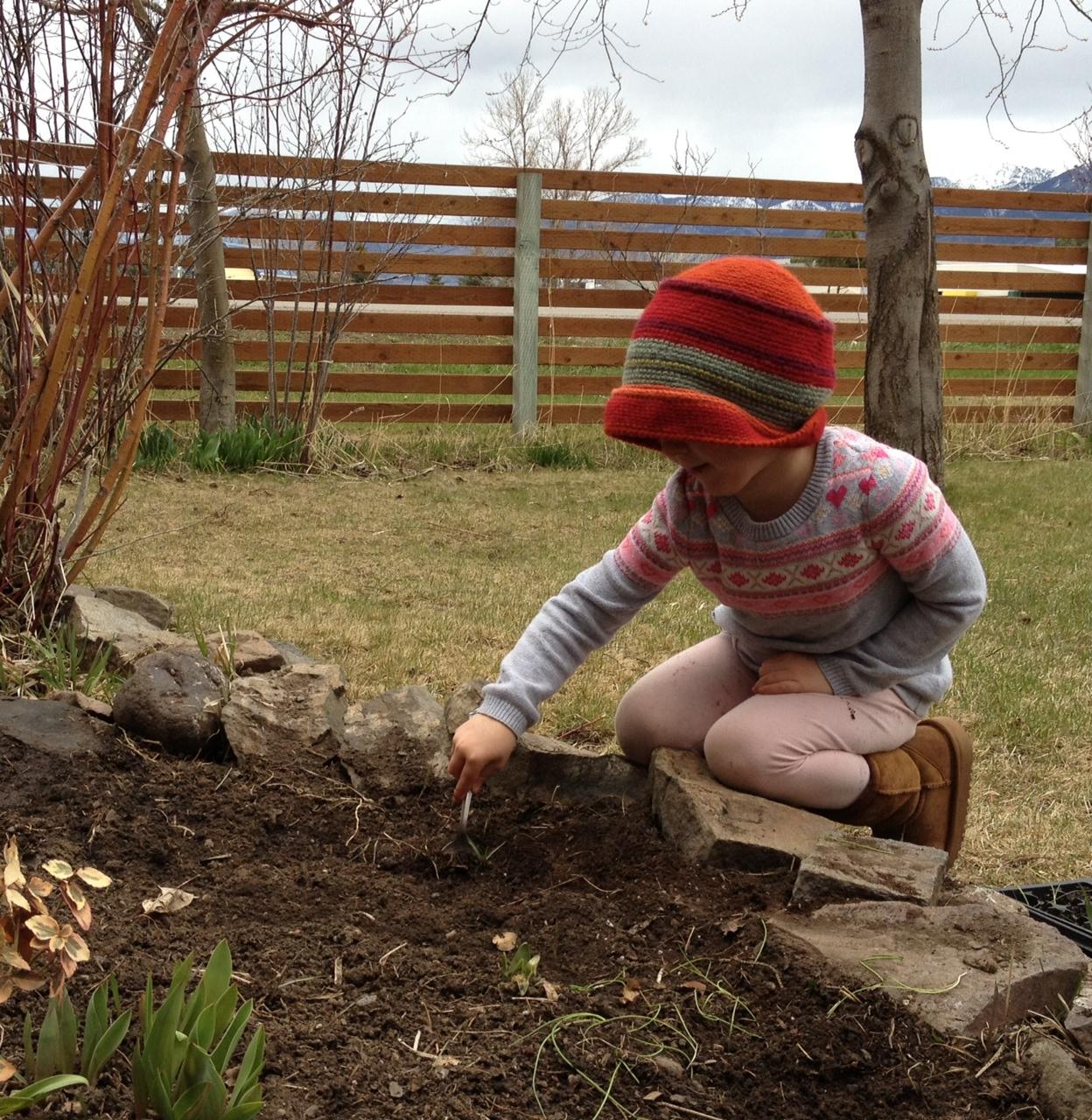
Abby played in the greenhouse with her littles.
And we had plans to meet at Home Depot to buy our containers for the container gardening project we’re working on.
But an hour before we were supposed to meet, the temperature dropped nearly 20 degrees to 28.
The wind picked up.
It started to snow.
So we were glad we went in with a plan because the Garden Center is outdoors. And no one was dressed for the weather.
We had done some re-con last week, so we quickly found a beautiful set of cobalt blue stone containers that are glazed only on the outside … and we almost fought about who was going to get to bring it home. Thankfully, a Garden Center employee was there to referee (and to point out there was another set on the tippy top shelf that he could bring down for us).
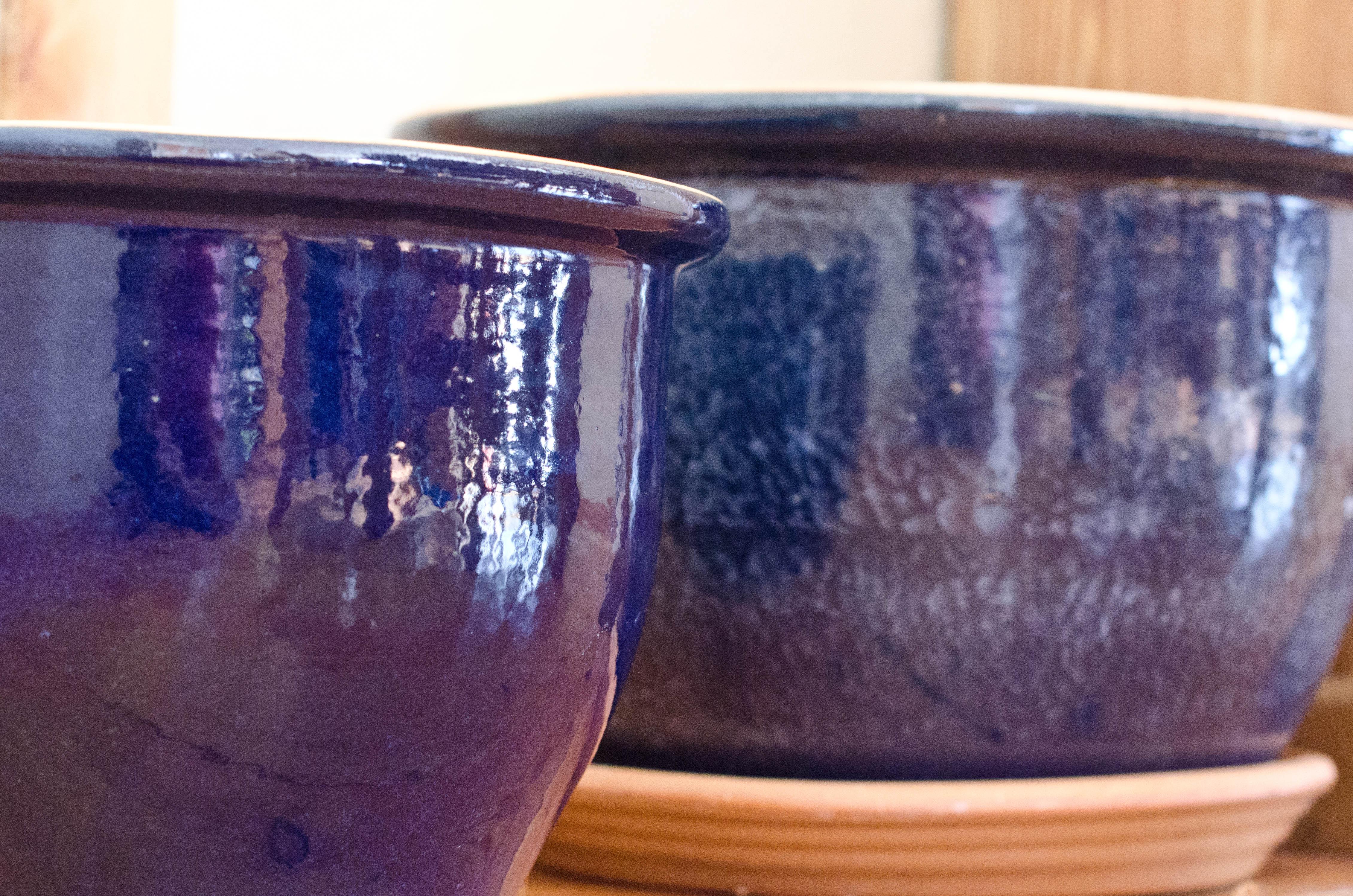
Crisis averted!
We laughed about it later … because we went in looking for what we thought were different things. But even though Abby’s plan for the pots involve sweet potatoes, lemon trees and strawberries, and Jeanne’s plan is to grow herbs and salad fixin’s outside her kitchen door, our needs were really similar.
We wanted containers that were eco-friendly … made of a “natural” compound that wouldn’t leach chemicals into our food.
We wanted something pretty that offered a pop of color to some currently monotone spaces.
We wanted containers big enough to develop strong root systems.
And we wanted sturdy vessels that could weather the extremes of our Montana days.
Apparently, there’s a lot to think about when considering a container garden! When you’re figuring out what you need, these are some of the things to think about:
What are you going to grow?
Herbs? Vegetables? Flowers? These questions influence the size of your containers.
Sugar baby watermelons (the only container-friendly watermelons we know of) or tomatoes need a big one to develop a strong root system (6 – 18 inches deep, 18-24 inches in diameter).
Basil or Thyme do best in pot that’s at least 3-6 inches in diameter.
A container to grow lettuce in can be pretty shallow, because their root systems aren’t very deep.
Where do you live and what type of container will you use?
Do you live in Florida or Texas and want your pots in a sunny spot on your patio? You might want to avoid metal containers as they will heat up and could potentially burn the roots of your plants. They’ll also require a LOT more watering.
Unglazed terra cotta is generally a wonderful choice for organic and eco-friendly gardening. It reduces the amount of water you need, it keeps the roots cool and happy. But if you live in a place like Montana (which holds the world record for the greatest temperature change in a 24-hour period … from minus 54 degrees to 49 degrees … 103 degrees!), you might want to skip out on the terra cotta because that same ability for it to absorb moisture can also cause it to crack in extreme weather shifts.
Untreated wood is another great organic choice. Like terra cotta, it will keep the roots warm when it’s cold and cool when it’s hot. And it requires a little less watering and maintenance. And when it’s cared for will weather beautifully. Abby has had her wooden half-barrels for more than four years and they are still gorgeous. With the help of a trellis of tomato cage, there are great for growing, well, tomatoes.
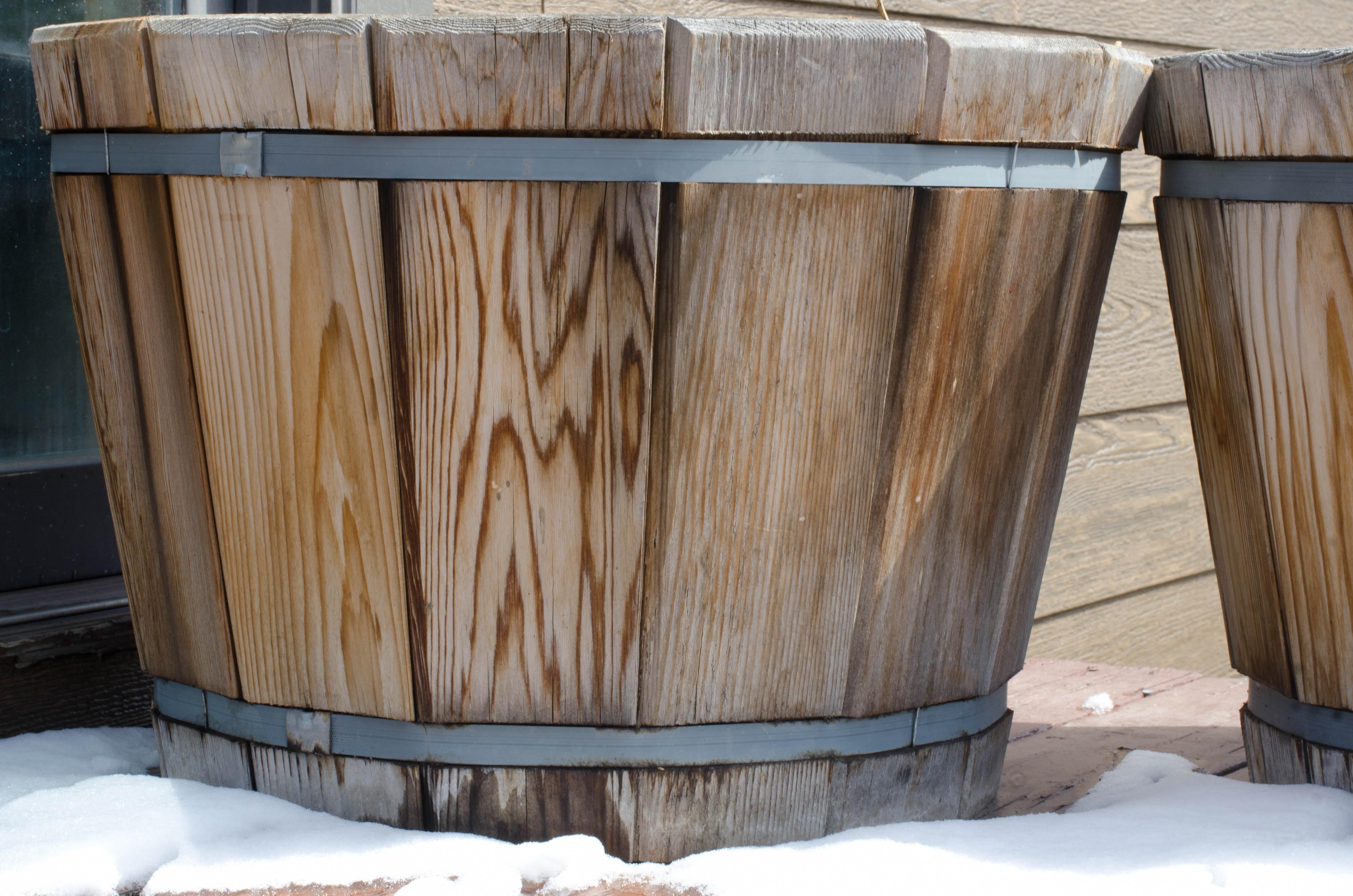
If you have the room, raised beds are always a great option. As with the wooden barrels above, using untreated wood is key. Jeanne has a few, and will be adding more this year. Raised bed garden kits are a great option, too!
Then, of course, there are choices like fiberglass and resin. We haven’t been able to find out much in the way of studies to confirm their viability in organic gardening. But they are lightweight, really cost-effective (aka inexpensive), can be really attractive, and in many cases, look a lot like the pottery they are designed to imitate. We almost snatched these up before the stone pots caught our eye.
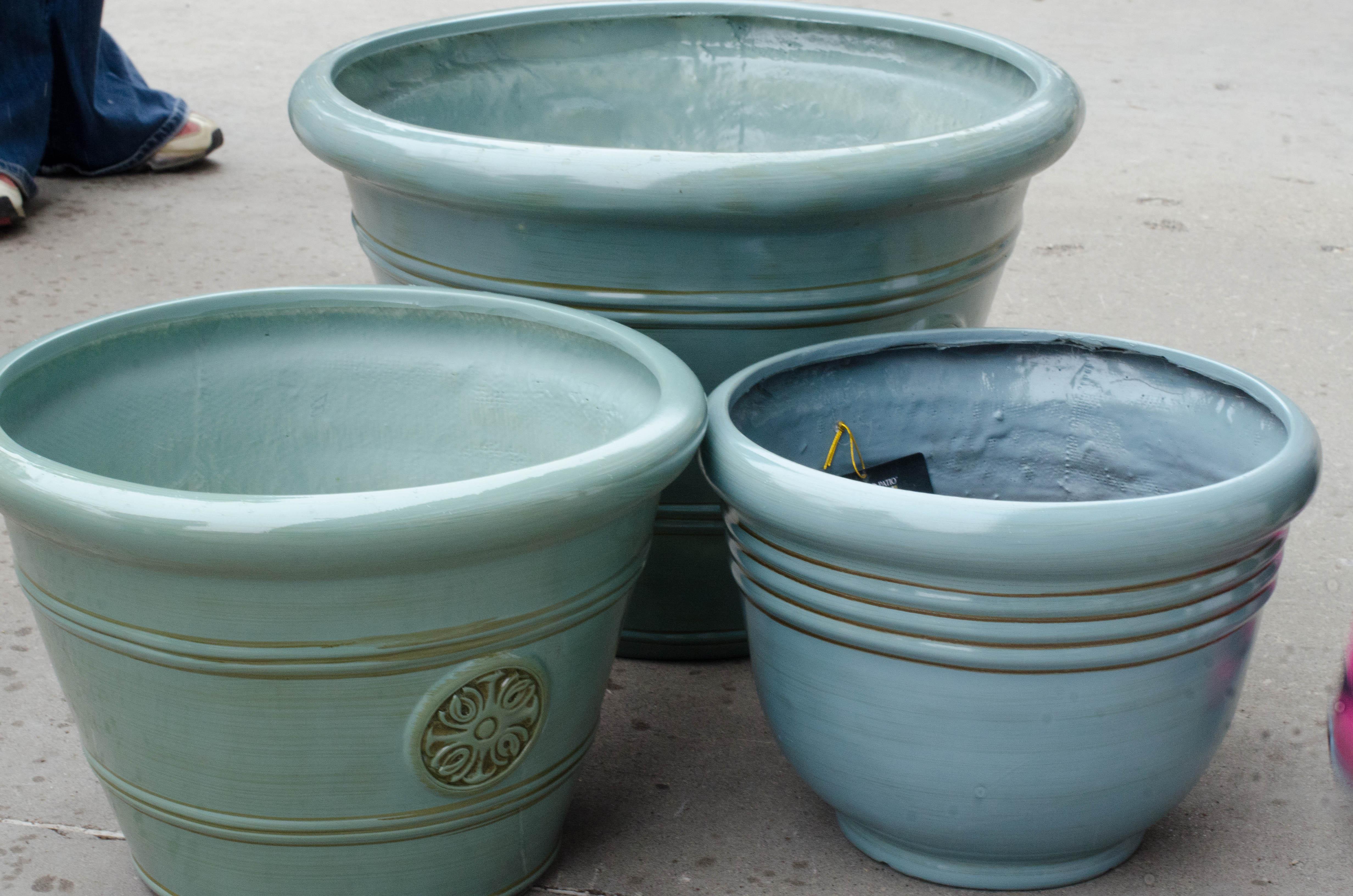
Stone is frost-resistant, eco-friendly and a fourth great choice for organic gardening. They are sturdy and heavy. So you’ll want to place these pots before you fill with soil because moving them around after they are planted won’t be too easy. They’re a little spendy. But they’ll last forever, so we figured it was worth the investment.
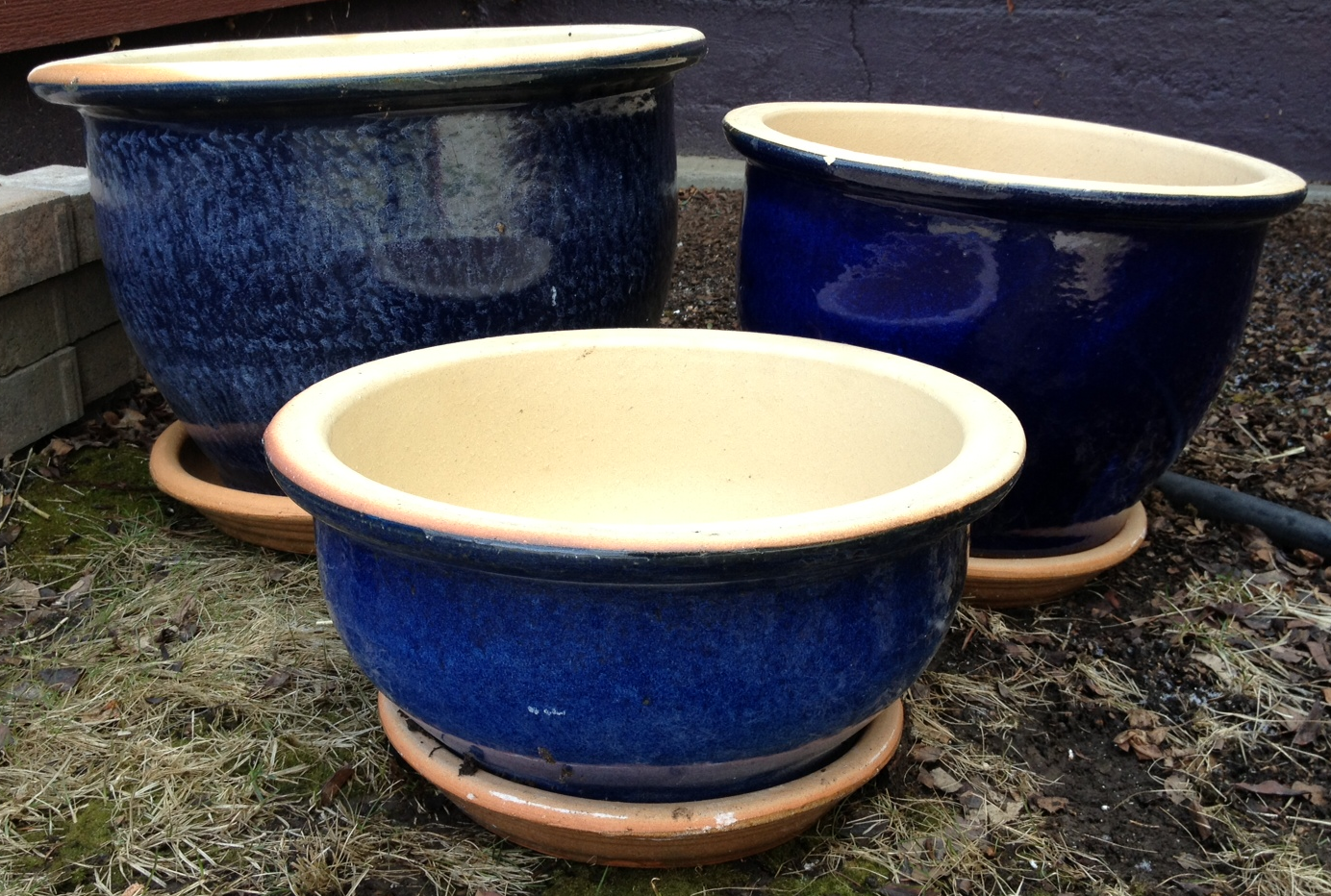
So now we’ve got our pots, which we were even more thrilled with once we got them home.
We’ve got some growing medium (aka soil).
And we’re already growing some plants that are going to go in them.
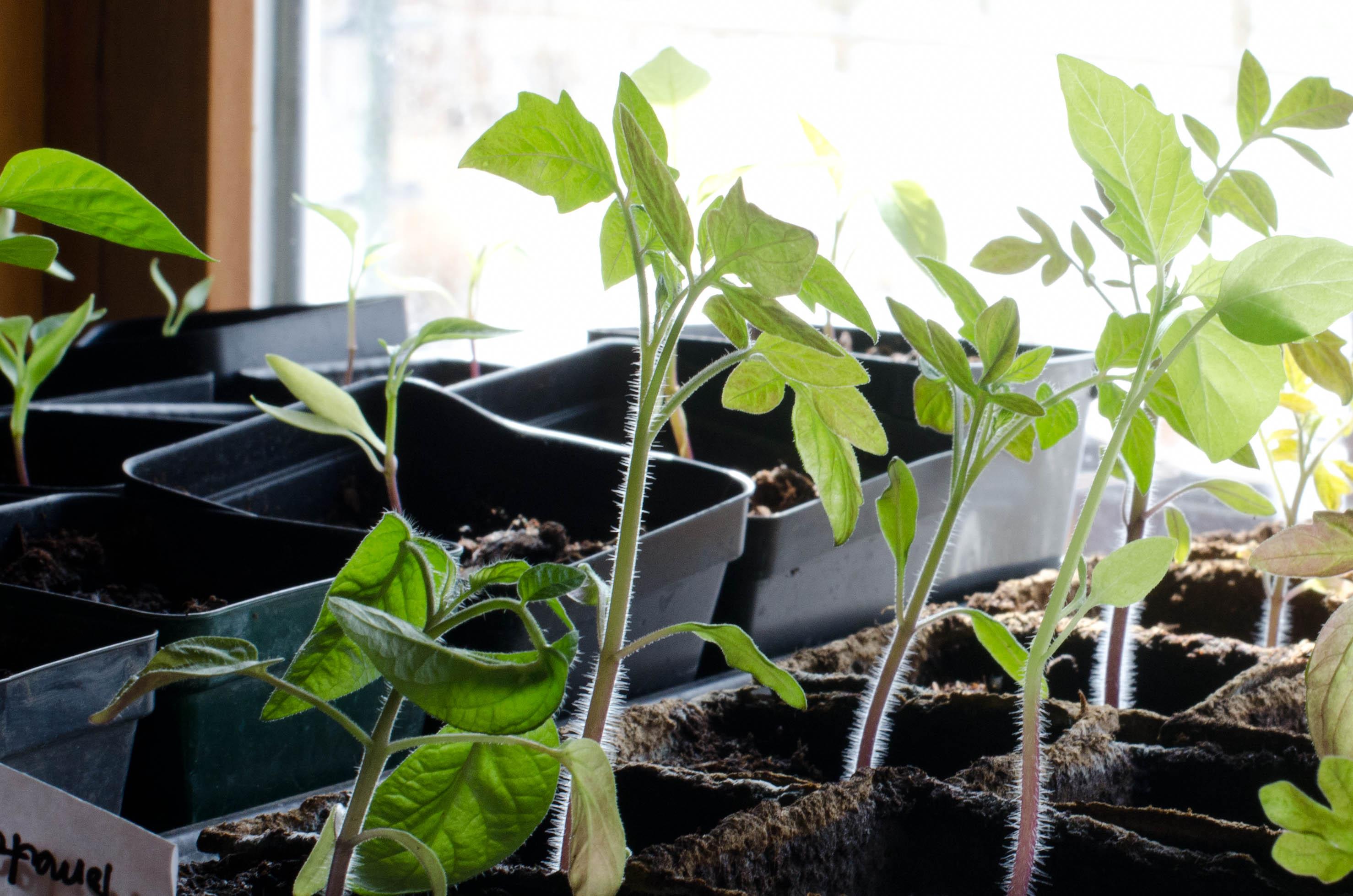
Woohoo!
It’s home improvement time, and The Home Depot has everything you need to #DigIn for Spring. No matter what projects you want to tackle, they have great values on all you need. They’re ready to help you with renovation ideas and expert advice, too.
Get over $300 in email exclusive savings each year, sneak peeks on new products, monthly lawn & garden ideas for your region and access to The Home Depot’s gardening experts.
Click HERE to join the world’s largest garden community today! Or go to http://gardenclub.homedepot.com/ to see some of the many benefits of membership.
This is a sponsored post written by us on behalf of The Home Depot.
